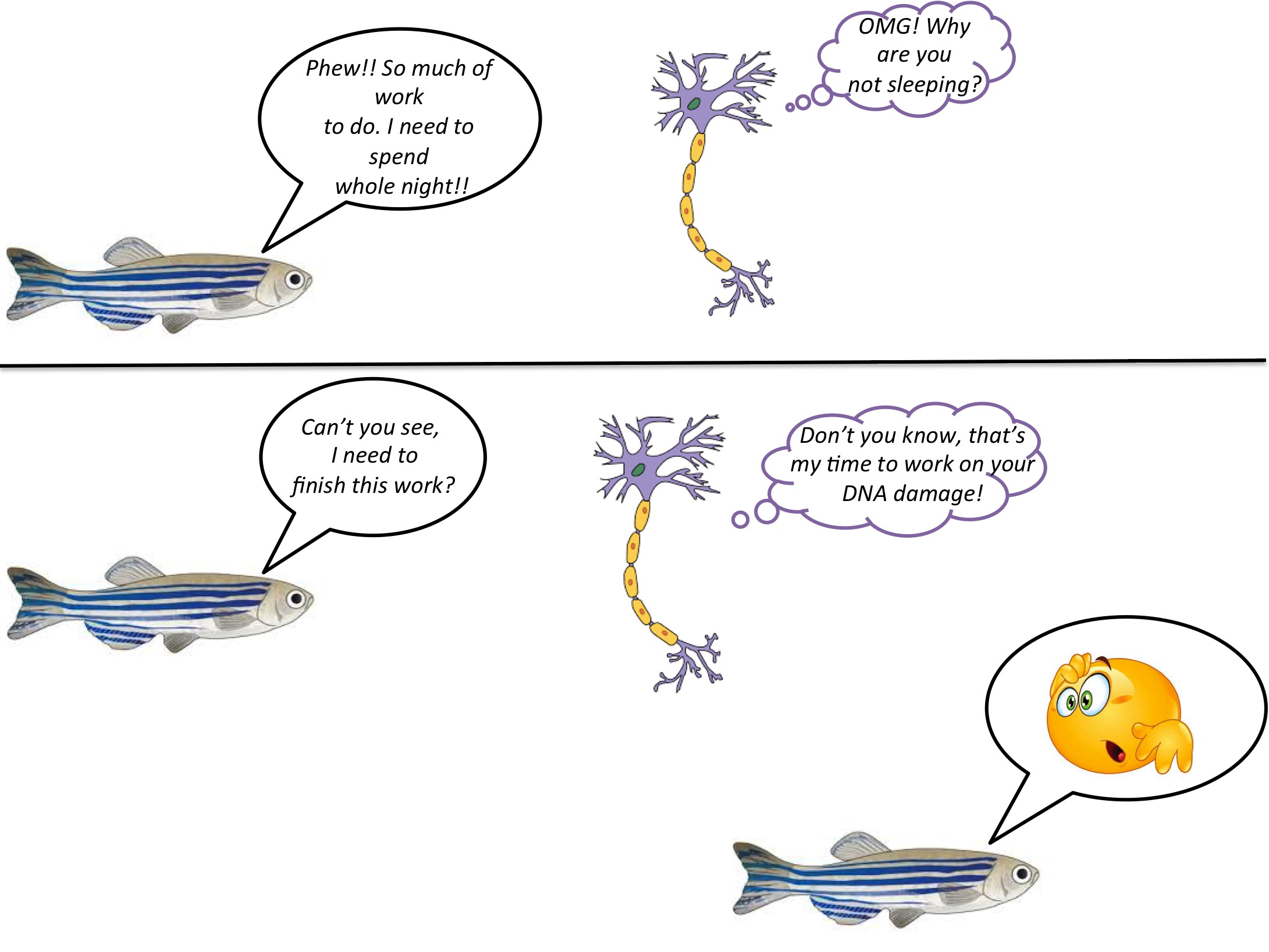After a laborious day at work, the best rejuvenating exercise to boost up our system is to get a sound sleep. Like humans, animals also relate to this fact and therefore,sleep or sleep-like state has beenfound in animals ranging from jellyfish to worms, fruit flies, zebrafish, birds and mammals. This intrigues to some pertinent questions about the mystery of sleep: what is the exact biological role of sleep for an organism? Why sleep mechanisms have evolved even in small animals?Why lack of sleep impairs brain function? To gain an insight into the cryptic world of sleep, we need to understand the regulation of physiological processes in organisms.
Sleep mechanism: Rheostasis
Actually, sleep can be stated as the ‘offline’ mode of an organism when it is not really ‘online’ and doing all the bodily functions. The existence of this offline period is extremely important for the efficient functioning of the organism, else it would have been limited as much as possible by the process of natural selection.Sleep is basically regulated by two important mechanisms: sleep-wake homeostasis and circadian rhythms. For the combination of these two terms, Mrosovsky (1990) coined the term “Rheostasis”. In simpler terms, for instance, these processes help the endotherms to precisely regulate their body temperature and yet allow it to fluctuate within a period of approx. 24 hrs. Similarly, homeostatic and circadian processes are regulating sleep, wherein the former is the internal biochemical system, which works like a timer, i.e., generates the desire to sleep after some time by accumulating sleep-inducing substances in brain. On the other hand, circadian rhythms control the timing of the sleep and coordinates with the light-dark cycle of the day and night. The coordination between these two mechanisms will define how well the animal can sleep.

Role of sleep
Many research studies have suggested that sleep serves vital functions of homeostatic maintenance, energy conservation, synaptic plasticity and memory consolidation.But the recent study doneat Bar-Ilan University, Israel and led by D. Zada (2019) has revealed a novel and unexpected function of sleep, wherein they have been successful in demonstrating a direct link between nuclear maintenance and sleep in zebrafish, which was used as their model organism.Now, nuclear maintenance, as the name suggests is fixing of some problem which is present in the nuclear material, i.e., DNA and one of the most lethal form of DNA damage is the presence of double stranded breaks or DSBs because if left unrepaired, they may lead to cellular death, chromosomal abnormalities, mutations and even cancer. One of the early responses to DSBs is the rapid phosphorylation of one of the histone protein called H2AX to produce γH2AX (Fig. 1). Therefore, in order to detect DSBs, immunofluorescence based assays that allow the visualization of discrete nuclear foci formed as a result of H2AX phosphorylation have been developed as very sensitive and reliable methods. Thus, D. Zada and his team were able to observe that no. of DSBs accumulate during the day, followed by a robust increase in chromosome dynamics in night, wherein the number of DSBs were gradually reduced. This confirmed that chromosome dynamics correlate with efficient reduction of DSBsduring the night and hence neurons require sleep in order to perform nuclear maintenance. In words of Prof. Lior Appelbaum, of Bar-Ilan University, "Roads accumulate wear and tear, especially during daytime rush hours, and it is most convenient and efficient to fix them at night, when there is light traffic."
Thus, this study helped scientists to actually visualize the processes occurring inside a single neuron cell when the animal is at sleep. The observations of neuronal activity obtained from single marked neurons during day and night periods indicated that chromosome dynamics such as chromosome movements and structural genomic arrangementsincreased by approximately two-fold during nighttime sleep in the brainregions (Fig. 2).
Specifically, neurons present in the rhinal cortex (RH) and inferior temporal cortex (TE)of the brain (present near hippocampus) were selected by D. Zada and his team because they regulate locomotor activity and cognition and also exhibit high levels of chromosome dynamics. Also, the use of zebrafish allowed the scientists to actually dig in a single cell and that too in a live animal due to its absolute transparency, and a brain very similar to humans.
Conclusion
Thus, such studies help in understanding the imperative importance of sleep and the benefits it brings to the brain at the cellular level. Therefore, it can be stated that sleep behavior has evolved and is so conserved in the animal kingdom so that their neurons are able to perform efficient nuclear maintenance.
References:D. Zada, I Bronshtein, T. Lerer-Goldshtein, Y. Garini & L. Appelbaum. (2019). Sleep increases chromosome dynamics to enable reduction of accumulating DNA damage in single neurons. Nature Communications, 10:895.
